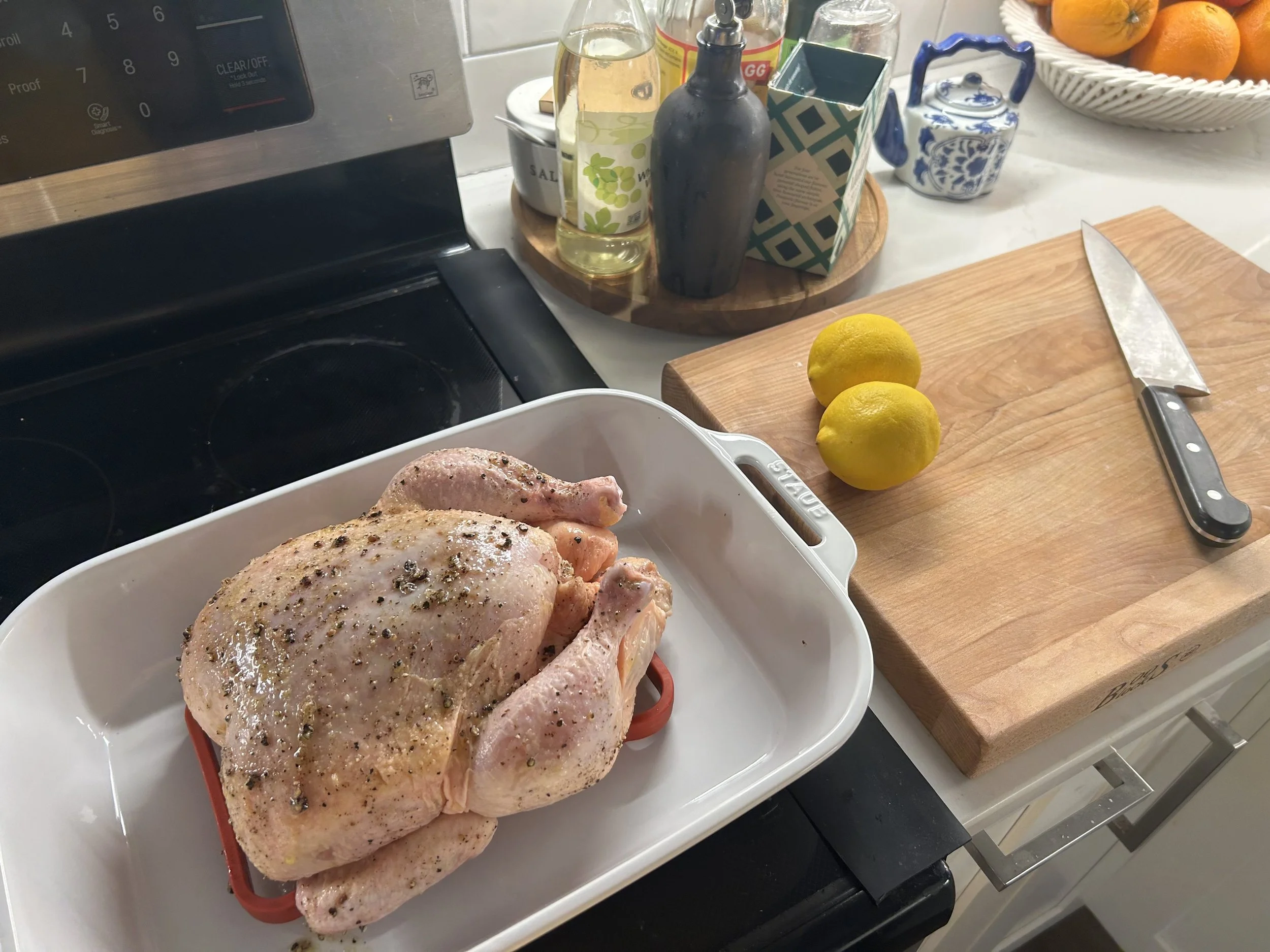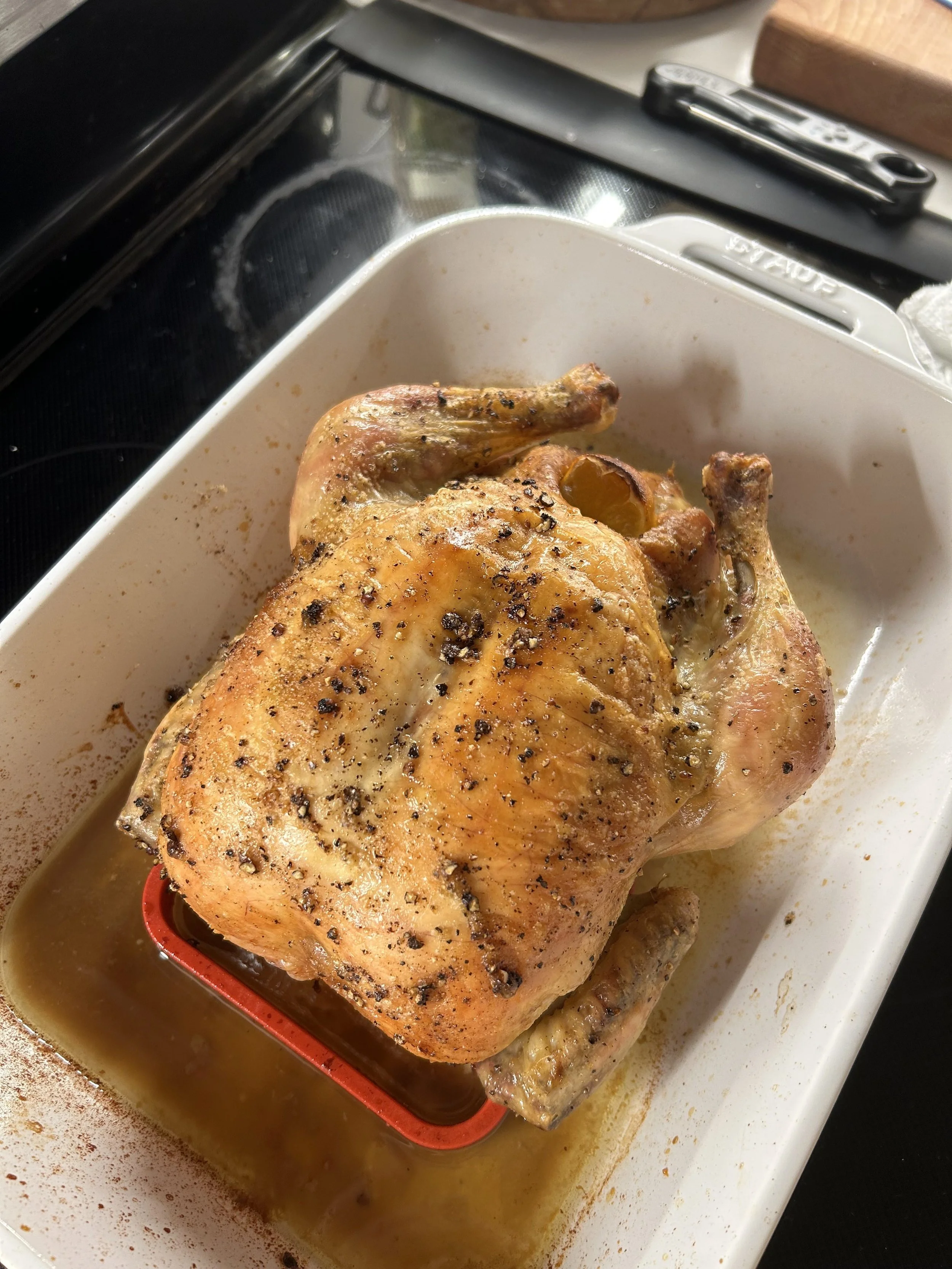Go-To Roasted Chicken
Who doesn’t love roasted chicken? It’s a classic for a reason, and when done right it’s unstoppable. With that being said, it can be challenging to roast a chicken perfectly even though there aren’t a lot of ingredients or steps. A lot of the success of learning to roast a chicken is trial and error and learning to trust your cooking skills, but there are some techniques that can set you up for success right off the bat.
How much salt should I use to season my roast chicken? I recommend about 1 teaspoon of Diamond Kosher Salt per pound of meat. If you’re using something saltier such as Morton’s Kosher Salt, you’ll want to use about half that.
How long does it take to roast a chicken? That’s a great question — it depends. A few of those factors are size of the chicken, temperature of the chicken when it went into the oven, and temperature of your oven. For a 3-4 pound chicken I always estimate an hour and a half, plus 20 minutes time to rest before you carve and serve the chicken. One way you can set yourself up for success is by investing in a good meat thermometer. This tool will enable you to get an instantaneous read on how cooked your chicken is, gauging how much time is left depending on how close the internal temperature is to 165 degrees.
What to serve with roast chicken? The possibilities are endless here because a good roasted chicken is the perfect accompaniment to many side dishes. How I choose is first based on what time of year I’m cooking the chicken in. If I’m preparing a spring or summer dinner, I usually consider a fresh salad, perhaps some grilled vegetables, anything to take advantage of the great seasonal produce. For fall I highly recommend our autumn salad as a side dish. If I’m preparing this roasted chicken dish in the winter, I lean towards more comforting accompaniments like our broccoli casserole. When in doubt, throw some baby potatoes in the pan with your roasted chicken — you’ll have a perfect side dish every time.
What to do with leftover roast chicken? The sky's the limit in this area! My go-to favorite uses for leftover roasted chicken are in soups, one-pot pasta dishes, quesadillas, or casseroles.
Why should you put a lemon in a roasted chicken? This is all about flavor! The key here is stuffing the chicken with an ingredient that won’t overpower the chicken, but add to its classic flavor. The lemons will give the chicken a slightly bright flavor, while also keeping the inside of the chicken moist. This makes lemons a great addition to your roasted chicken, but other options would be an onion, any vegetable such as celery or carrot, or any citrus.
Do you cover a chicken when roasting? I recommend covering the chicken for a portion of the cooking time. You can cook it uncovered at first until the desired brownness is achieved and then cover it loosely with tin foil for the remainder of the cooking time. It’s also acceptable to roast it covered until the very last portion of cooking time and removing the tin foil, allowing the chicken to brown in the last few minutes. I think either option will give you great results, choosing just depends on your comfortability in the kitchen.

Go-To Roasted Chicken
Ingredients
- 1 Whole Chicken, About 3-5 lbs
- 2 lemons, halved
- Olive Oil
- Salt & Pepper
Instructions
- Prepare your seasoning mix for the chicken in a small ramekin. Start with salt and pepper, and then add in any flavor boosters you like such as dried thyme, garlic powder, or paprika. Remove the chicken from any store packaging, putting it in a large dish where it won’t leak. Pat the chicken dry and drizzle it with a good quality olive oil. Season the chicken (inside and out) with your seasoning mixture. Put the chicken back in the fridge uncovered for at least two hours or overnight, allowing the seasoning to penetrate the meat and dry the skin out so it gets crispy while it roasts.
- When it’s time to roast your chicken, remove it from the fridge one hour before you start roasting so it can cook evenly in the oven. Preheat your oven to 375, place your chicken in a roasting pan, and stuff the cavity of the chicken with the halved lemons. Cook the chicken until the internal temperature reaches 165 degrees when measured with a meat thermometer, typically about an hour and a half.


